Outsourcing Technology
Practical Guides for Librarians
 About the Series
About the Series
This innovative series written and edited for librarians by librarians provides authoritative, practical information and guidance on a wide spectrum of library processes and operations.
Books in the series are focused, describing practical and innovative solutions to a problem facing todays librarian and delivering step-by-step guidance for planning, creating, implementing, managing, and evaluating a wide range of services and programs.
The books are aimed at beginning and intermediate librarians needing basic instruction/guidance in a specific subject and at experienced librarians who need to gain knowledge in a new area or guidance in implementing a new program/service.
 About the Series Editor
About the Series Editor
The Practical Guides for Librarians series was conceived by and is edited by M. Sandra Wood, MLS, MBA, AHIP, FMLA, Librarian Emerita, Penn State University Libraries.
M. Sandra Wood was a librarian at the George T. Harrell Library, The Milton S. Hershey Medical Center, College of Medicine, Pennsylvania State University, Hershey, PA, for over 35 years, specializing in reference, educational, and database services. Ms. Wood worked for several years as a Development Editor for Neal-Schuman Publishers.
Ms. Wood received a MLS from Indiana University and a MBA from the University of Maryland. She is a Fellow of the Medical Library Association and served as a member of MLAs Board of Directors from 1991 to 1995. Ms. Wood is founding and current editor of Medical Reference Services Quarterly , now in its 35th volume. She also was founding editor of the Journal of Consumer Health on the Internet and the Journal of Electronic Resources in Medical Libraries and served as editor/co-editor of both journals through 2011.
Titles in the Series
- How to Teach: A Practical Guide for Librarians by Beverley E. Crane.
- Implementing an Inclusive Staffing Model for Todays Reference Services by Julia K. Nims, Paula Storm, and Robert Stevens.
- Managing Digital Audiovisual Resources: A Practical Guide for Librarians by Matthew C. Mariner.
- Outsourcing Technology: A Practical Guide for Librarians by Robin Hastings.
Outsourcing Technology
A Practical Guide for Librarians
Robin Hastings
Practical Guides for Librarians, No. 4
ROWMAN & LITTLEFIELD
Lanham Boulder New York Toronto Plymouth, UK
Published by Rowman & Littlefield
4501 Forbes Boulevard, Suite 200, Lanham, Maryland 20706
www.rowman.com
10 Thornbury Road, Plymouth PL6 7PP, United Kingdom
Copyright 2014 by Rowman & Littlefield
All rights reserved . No part of this book may be reproduced in any form or by any electronic or mechanical means, including information storage and retrieval systems, without written permission from the publisher, except by a reviewer who may quote passages in a review.
British Library Cataloguing in Publication Information Available
Library of Congress Cataloging-in-Publication Data
Hastings, Robin, 1973
Outsourcing technology : a practical guide for librarians / Robin Hastings.
pages cm. (Practical guides for librarians ; no. 4)
Includes bibliographical references and index.
ISBN 978-0-8108-9247-7 (cloth : alk. paper) ISBN 978-0-8108-9248-4 (ebook) 1. LibrariesAutomationContracting out. I. Title.
Z678.93.C67H37 2014
025.00285dc23 2013040881
 The paper used in this publication meets the minimum requirements of American National Standard for Information SciencesPermanence of Paper for Printed Library Materials, ANSI/NISO Z39.48-1992. Printed in the United States of America
The paper used in this publication meets the minimum requirements of American National Standard for Information SciencesPermanence of Paper for Printed Library Materials, ANSI/NISO Z39.48-1992. Printed in the United States of America
Preface
Modern libraries need technology. From the ILS (integrated library system) that manages inventory and loaning of materials to supporting staff functions via a file server or e-mail service, technologyalong with its attendant care and feedingis necessary to run a modern library. The realities of today, however, are that the people needed to care for that technology are expensivetoo expensive for some libraries to afford as full-time staff. With some judicious use of outsourced labor and knowledge, though, even tiny libraries can keep up-to-date, and big libraries can get the help they need to keep up with their most technologically demanding patrons, projects, and programs. No matter what the size of your library or technology staff, this book will help you get outside help to make your technology shine.
Making libraries and their technology meet the needs of library patrons is one of the major reasons that I wrote this book. After spending more than half my working life providing technological assistance to public library patrons in some form or another, I think that all libraries can provide the kind of technological resources that we often see at only the big libraries. In providing public access to public computer labs, makerspaces, and technological petting zoos, among other techie projects, small libraries can be just as forward-thinking and just as able to support their patrons needs as the biggest libraries can. This book will help small and rural libraries figure out what their patrons really want; then, with that information under their belts, they can prioritize their budgets and staff time to give those patrons what they need.
I have been working in library technology for more than fourteen years, several of those as the coordinator or manager of a public library IT (information technology) department and the last as the director of an IT department providing technological consulting for libraries in the northeast Kansas area. My experience has been that no matter how well funded the library, technology know-how is expensive and difficult to obtain and keep in-house. This book will help you supplement your existing technological staff or create a tech staff entirely from outsourced consultants and vendors to better serve your patrons. To do this, I discuss outsourcing every aspect of library technology, from the integrated library system to the e-mail system that your staff uses to security and web design. Included are examples from many kinds of organizations, not just libraries, along with concrete solutions to many of your IT departments toughest problems.
 Organization
Organization
Outsourcing Technology: A Practical Guide for Librarians starts with theory and goes on to practical usage of outsourcing, including real-world examples of outsourcing in action. Chapter 1, Why Outsource Technology? includes a discussion on outsourcing, cloud computing and how it is used in outsourcing, and why your library mightor might notwant to outsource some of your technology tasks.
The second chapter, Assessing the Librarys Environment, guides you through how to assess your librarys environment. No outsourcing project will be successful if you do not first know what you need to outsource and what you can do in-house. This chapter gives concrete examples for how to determine what your technology needs are before you begin to outsource anything.
Outsourcing, by definition, means that you will be dealing with outside consultants, vendors, volunteers, and collaborators of all kinds. Many of them will require contracts and other formal relationship-defining instruments. Chapter 3, Outsourcing Relationships, provides you with resources and tips to manage those relationships, both formal and informal.
Next page



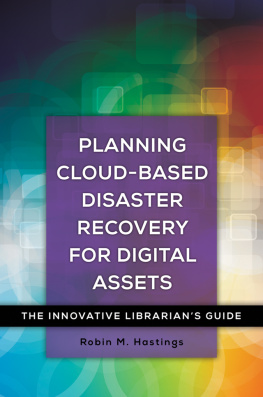


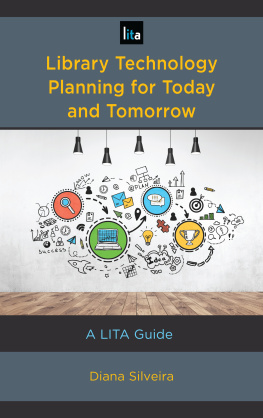
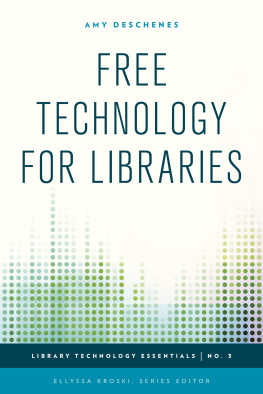
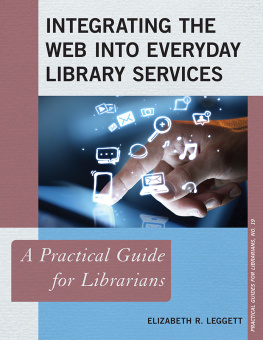
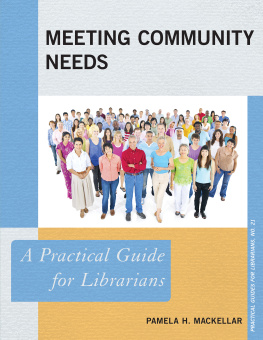
 About the Series
About the Series The paper used in this publication meets the minimum requirements of American National Standard for Information SciencesPermanence of Paper for Printed Library Materials, ANSI/NISO Z39.48-1992. Printed in the United States of America
The paper used in this publication meets the minimum requirements of American National Standard for Information SciencesPermanence of Paper for Printed Library Materials, ANSI/NISO Z39.48-1992. Printed in the United States of America